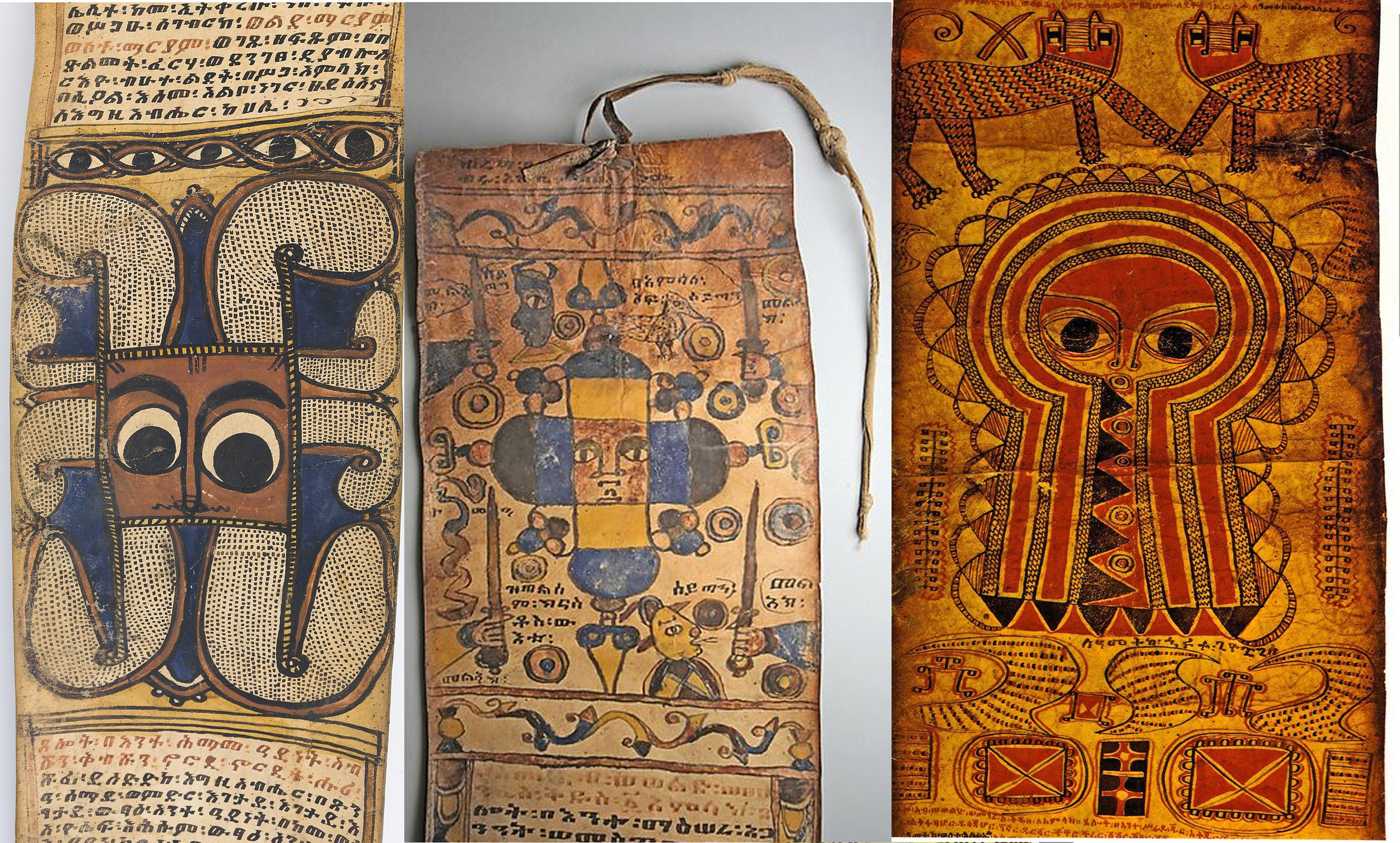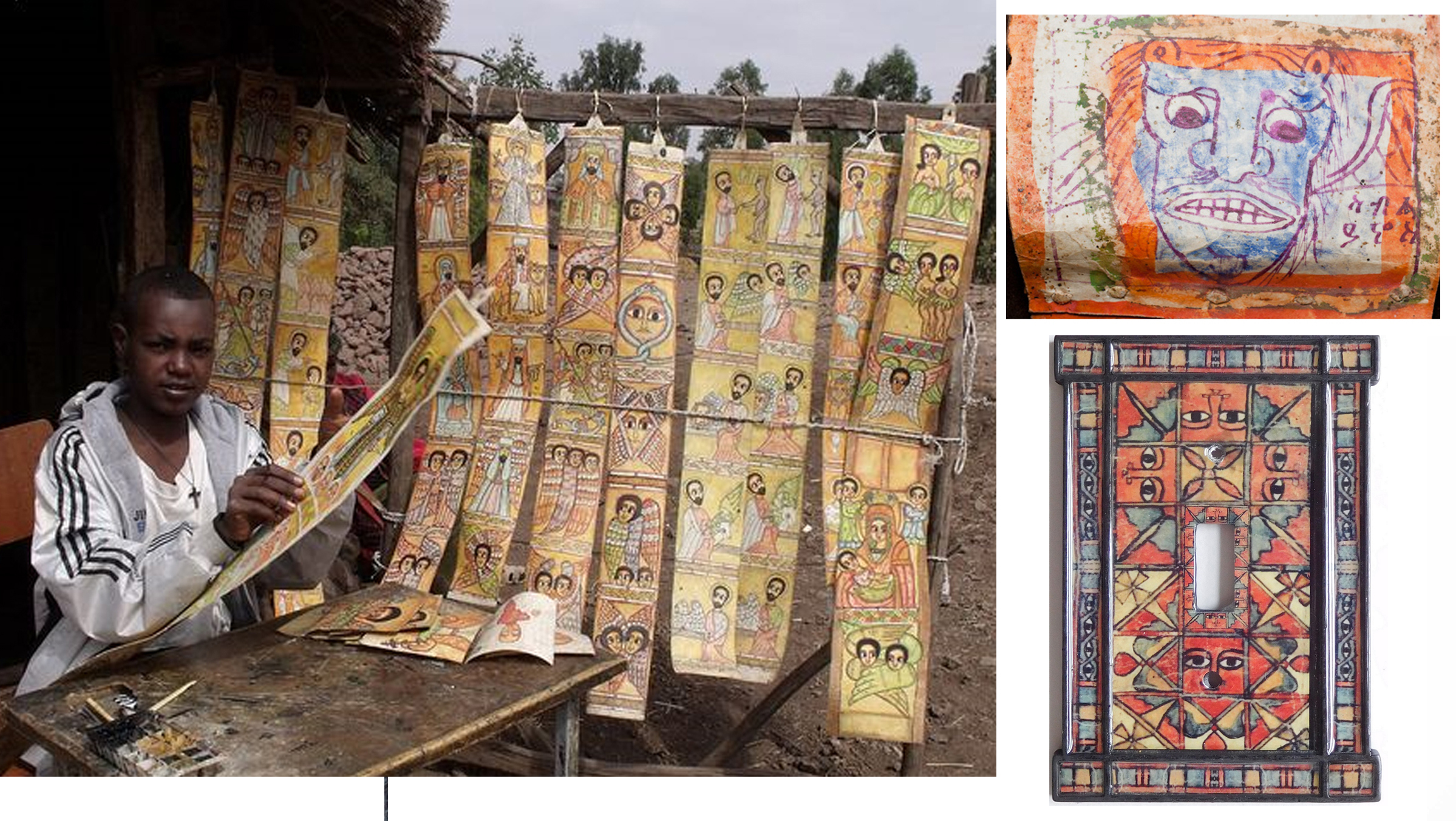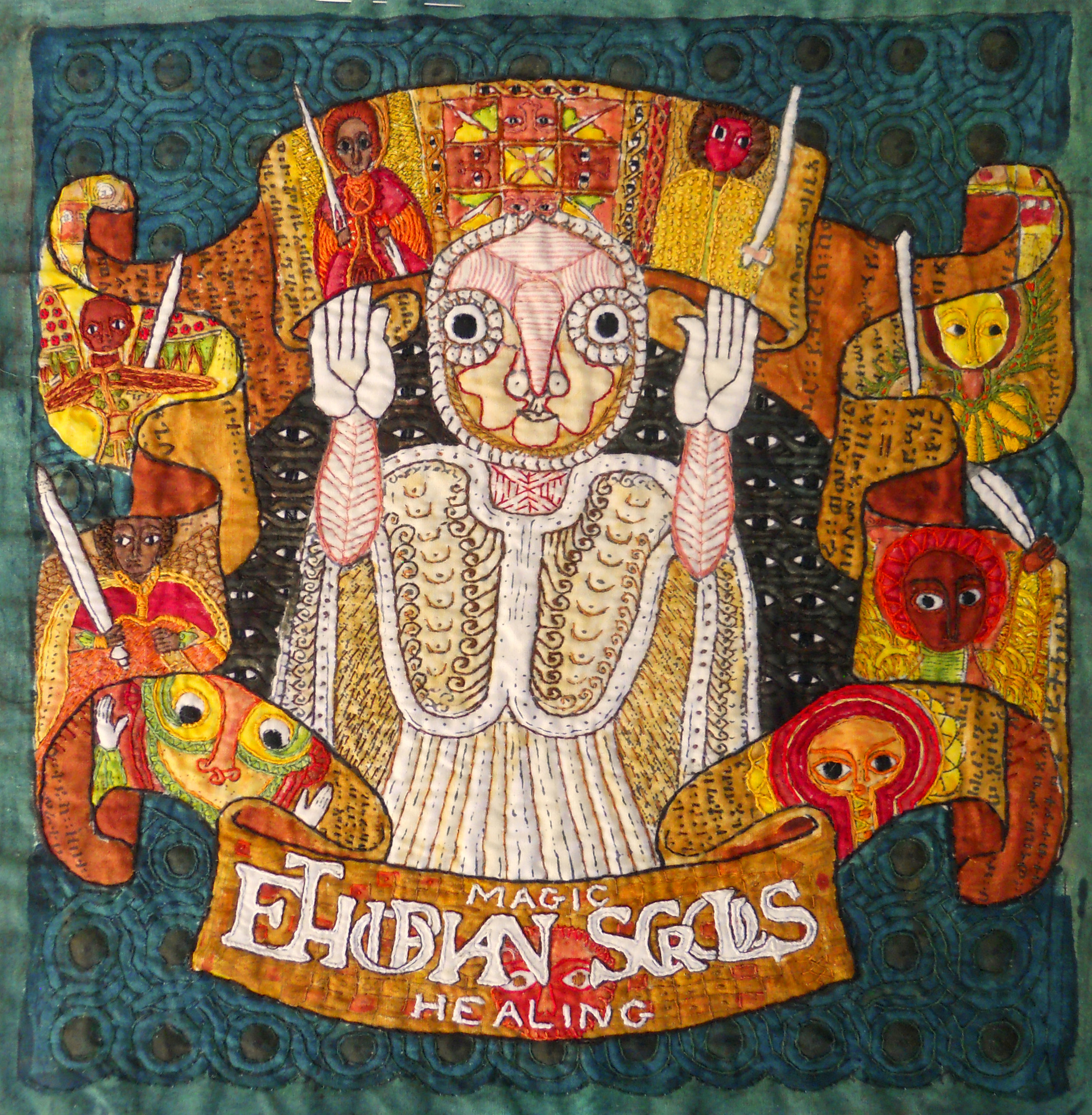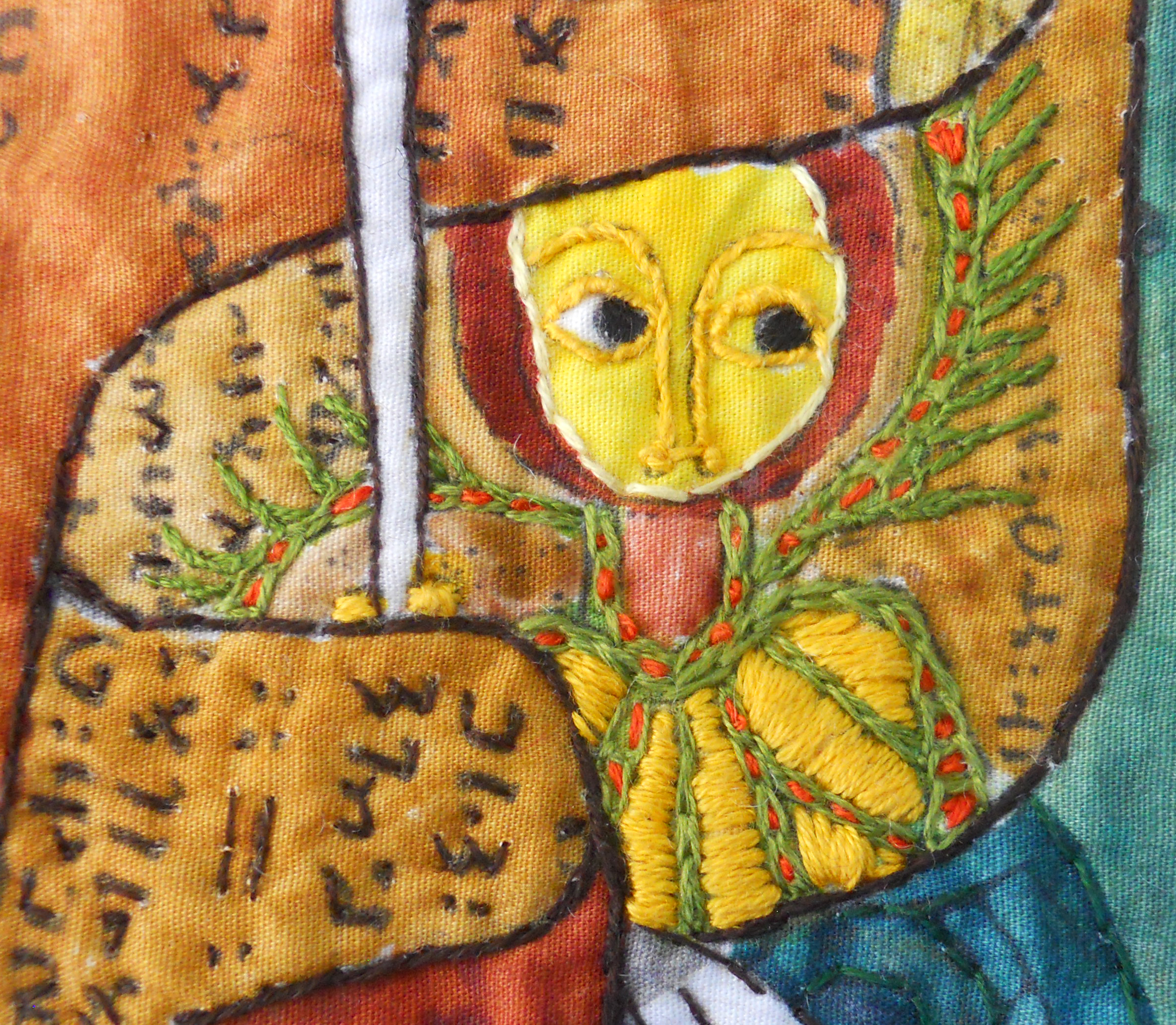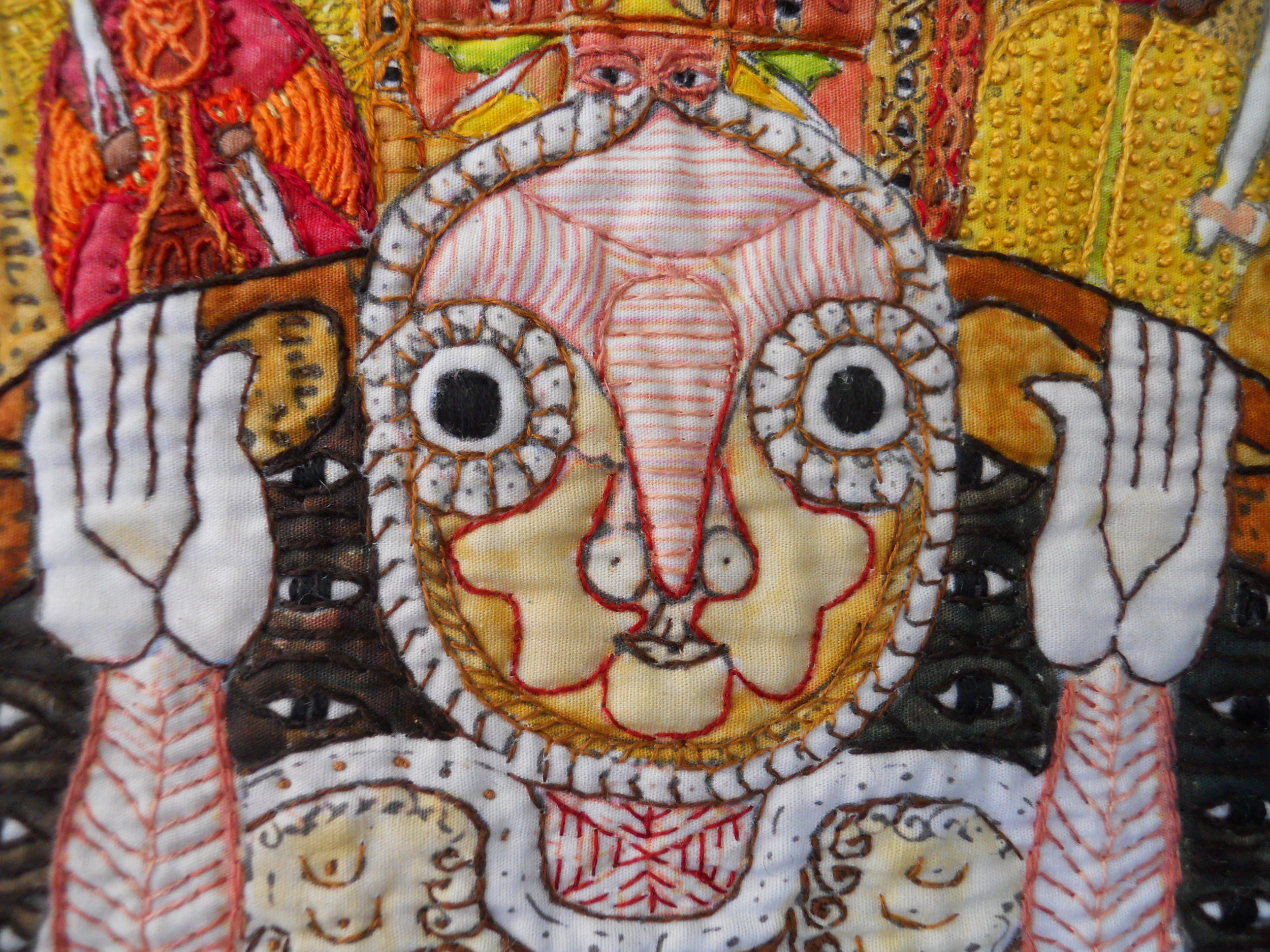This will be the last post until Dec 3rd. I will be taking 2 weeks off for travel/family/food. But I’m leaving you with a big, juicy post full of gorgeous images. Enjoy, and Happy Thanksgiving!
I mentioned these scrolls in last week’s post on the Library at Ephesus.
These powerful images, with such strong colors, just dazzled me. I had never heard of them before. How about we just savor these photos, and then I’ll tell you all about them, OK?
Look at the design of that nose! Not to mention the legs - and feet with eyes!!! - coming out over the head…
The designs on the one on the left look a bit Celtic.
Angels defending against demons with their swords (below). Until I looked carefully, I thought they each had two swords….then I realized that they have a sword and a scabbard.
A wide range of skill in these drawings. Some are highly detailed and beautifully colored…others look like quickly drawn doodles. Look at the second from left, above: the line of the eyebrow dips into the nose, then loops to form the nostrils, while her arm juts in from the side - touches worthy of Picasso. While these two below have been dashed off.
This next one is the best. The outline around the face, starting up with the fish on top of her head and swooping around her eyes! The planes of her face delineated in shape and pattern. The artist put a lot of work into this. I spent a good deal of time photoshopping it to increase the contrast.
Now, the making of these scrolls:
The website http://wonder-cabinet.sites.gettysburg.edu/2017/ gives this explanation for the making of the scrolls: The preparation of parchment begins a ritual in which the animal substitutes for the afflicted and the finished scroll substitutes for their skin. This symbolic relationship engenders a close connection between the scroll and its owner. The patron is first rubbed with a live animal, and later bathed in its blood and stomach contents. Only then is the skin soaked, dried, and scraped, after which the finished parchment is cut and sewn into a scroll. Portable scrolls made to the length of the customer offer head-to-toe spiritual protection, while longer scrolls protect a household.
In our highly sanitized culture, this sounds barbaric. But think of the incredible magical power. The unordained clerics of the Ethiopian church, called däbtäras, who make these scrolls, are not just uttering a few magical words. They are giving a viscerally immersive experience with a tangible end product. If nothing else, it’s got to have a strong psychological effect.
The prayers are written with carbon black ink, while the names of the holy Trinity and headings are written with red ink. The client's name is added in red only after the scroll's completion. The inks are sometimes enhanced with ritually powerful plants or sacrificial blood to increase their effectiveness.
Some of these wonderful scrolls are being saved in museums. But in Ethiopia, the scrolls seem to have devolved into made-for-tourist quality:
OK, on to the tablet. Let’s start with lots of scrolls and ribbons….
This is a page in progress. I have a variety of images all together in one large jpeg. Then I can copy and paste images and wording into the tablet (center square). Here, two panels of writing have been turned at an angle to make it easier to copy onto the angled scroll.
Unlike the Ephesus tablet, this one was so straightforward. It came together very quickly!
Basically, I copied the colors used on the original scrolls, except for that figure in the center, where I added YELLOW! and BLUE! Which made this first attempt totally wrong. What was I thinking? Why? Back to the dye studio…
Much better. Only a very muted bit of color, so she can hold her own against all that intensity. I just started sewing, and I love the extra punch the stitches give:
Just a single thread of embroidery floss makes such a difference. See the panel at the neck, versus the unsewn arms? Time to go play….
(many days later)





